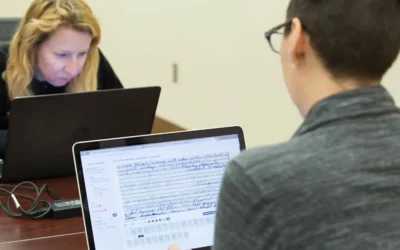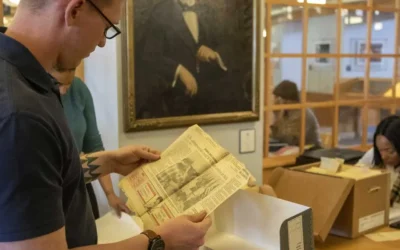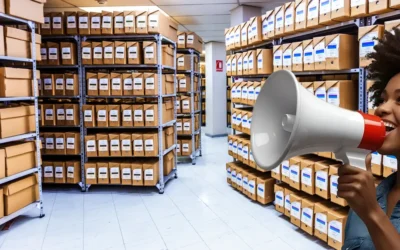Why Archivists Should Collect Metrics
Margot Note
Archival repositories implement collections management systems (CMS) to address strategic needs.
High-level institutional buy-in and ongoing support from senior management must support a CMS project. However, seeing the benefits of a collections management system and articulating that value to people in charge of making executive decisions are two different skills.
Archivists justify a CMS project to stakeholders by explaining the collections management system’s importance in retrieving archival information quickly and accurately, saving labor and operating costs in the long term.
Statistics and Systems
One way to articulate this need is to demonstrate how a robust archival collections management system can gather powerful statistics. The statistics show, in detail, how many users are accessing the materials, requesting archival services, and engaging with records of enduring value. Metrics tell the story of archival collections. Many archivists may be familiar with citation-based metrics or bibliometrics used in libraries; archivists now collect and analyze a wider variety of data about their holdings. In turn, this allows archivists new ways of measuring research using collections.
Measurements of impact assess the performance of institutions and collections. For example, funders use them to evaluate grant applications, and they can inform strategic planning decisions within organizations. From statistics, archivists can glean what collections are being used at their institutions and what collections need to be promoted more. Most importantly, decision-makers increasingly use impact metrics when choosing how to distribute resources.
Raising Awareness and Visibility
Archivists must continually work on visibility, thereby showing value to the institution and promoting the belief of their institution’s value. Archives departments need measurements to support statements and analysis. Senior management, grant agencies, and donors ask archivists to supply evidence that their collections are being used, discussed, and valued based on their invested resources.
Metrics can help archivists in cultural institutions provide evidence of the expanding online attention to their work and its value. For instance, users of reading rooms are a critical focal point for archives. Other factors may include the number of document downloads, reference requests, or image use requests. The use of quantitative metrics such as the number of users in a period or the revenue from programs for visitors is one way to measure success. Simultaneously, the quality of a visit is also important, and surveys, observations, and comments from users obtain that measure. Archivists can obtain information on how and where online discussions of research are happening and who is taking part in them. This data is valuable to archivists who can use such information to support grant applications or other fundraising initiatives. Metrics are also helpful for marketing, public relations, and communications purposes.
Proving Value
Archives remain challenged to prove their value to various constituencies. What can archivists do to ensure the responsible and effective use of metrics? They can promote the impact of their collections by understanding how the underlying statistics inform the metrics. They can supply context and encourage the responsible use of metrics. In-depth knowledge of metrics is a highly valued skillset that supports the research mission of a variety of institutions beyond the academic sphere. By using metrics, archivists can show the meaningful value that supports the organizational mission.
Leveraging Data
Archivists need to rise to the challenge of leveraging operational data to support decision-making. They can articulate the value of their positions and collections with words and actions, but numbers speak loudly to stakeholders. With an archival collections management system, archivists can collect metrics to support better insights and decisions. Identifying, defining, and collecting statistics that best represent their institutions, collections, and user communities helps archivists preserve meaningful historical materials.
Margot Note
Margot Note, archivist, consultant, and author is a guest blogger for Lucidea, provider of ArchivEra, archival collections management software for today’s challenges and tomorrow’s opportunities. Read more of Margot’s posts, and register here for her upcoming webinar, “CMS Essentials for Success #6: Metrics and Reporting” on June 16, 2021.
Similar Posts
Collaborative Archival Relationships
Collaborative projects are instrumental in showcasing how archival collections can benefit various organizational departments.
Informational, Evidential, and Intrinsic Values within Archives
Archives provide authentic, reliable information and hold values that reflect their functions and uses; informational, evidential, and intrinsic.
A Sustainable Archives
Archivists prioritize sustainable practices and policies, rooting their work in ethics of care, often preferring digital processing and preservation
Archival Branding and PR Strategies
Archivists who adopt branding and PR strategies both safeguard historical treasures and contribute to their organizations’ evolution.




Leave a Comment
Comments are reviewed and must adhere to our comments policy.
0 Comments